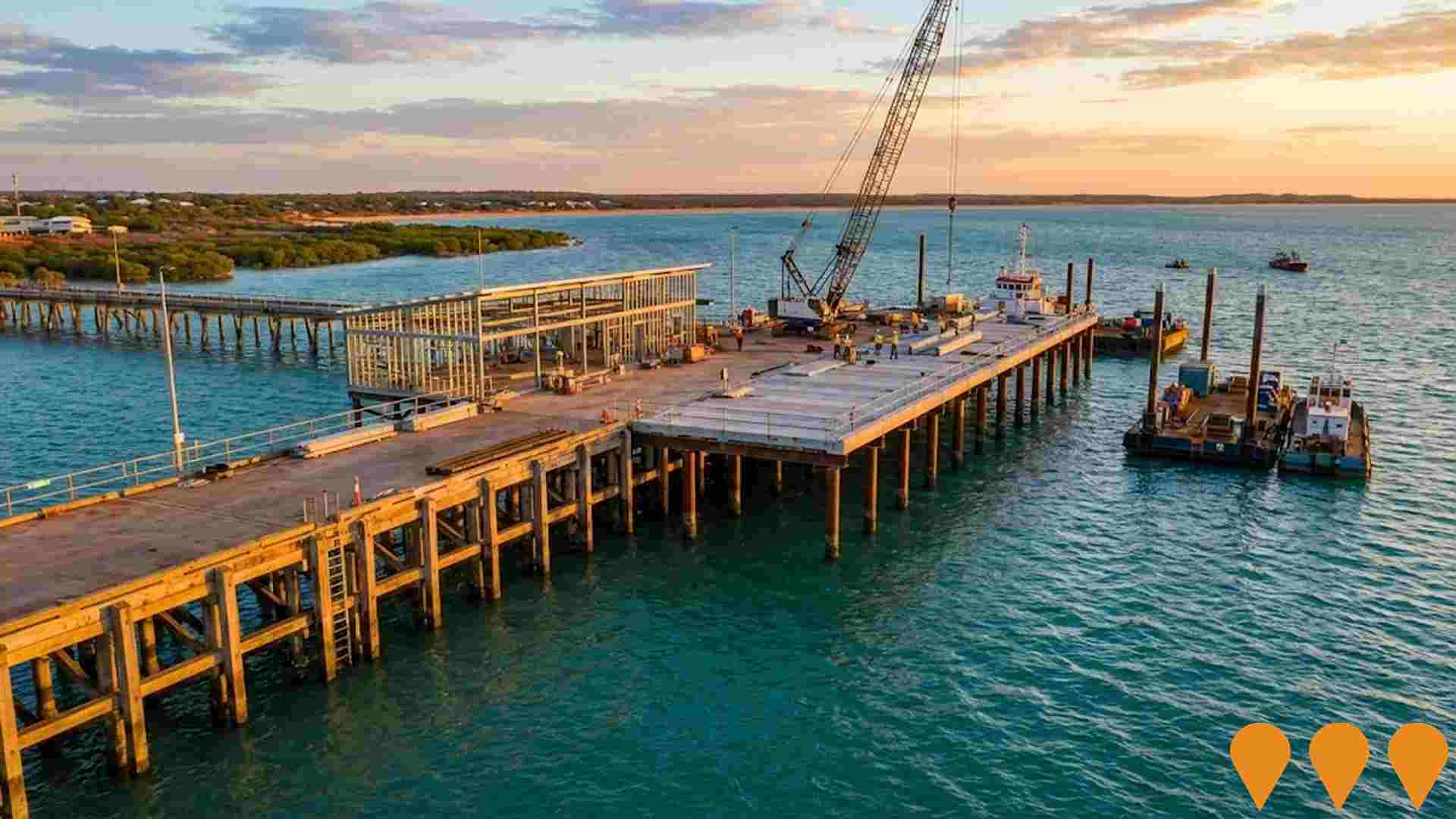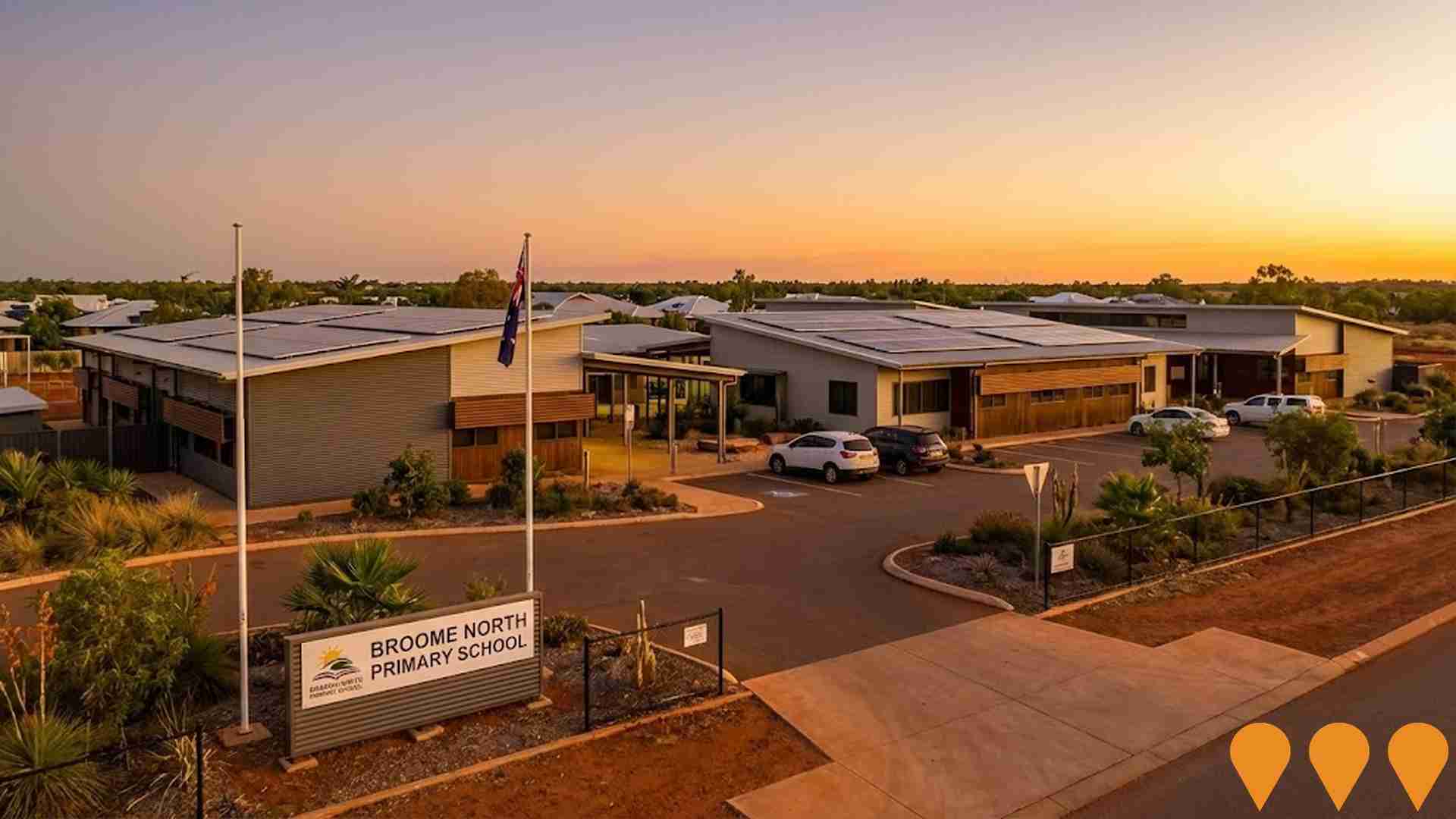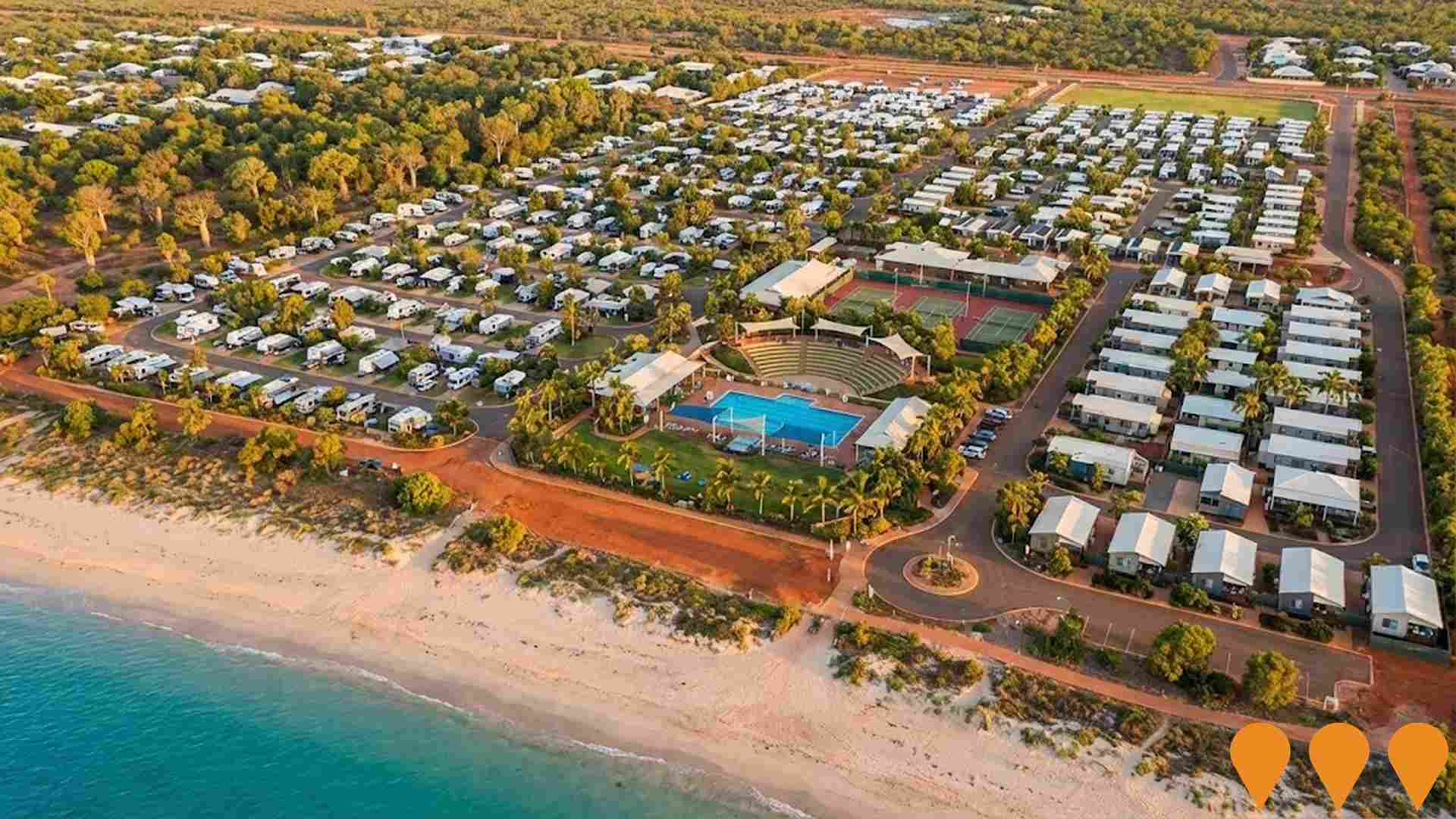Chart Color Schemes
est. as @ -- *
ABS ERP | -- people | --
2021 Census | -- people
Sales Activity
Curious about local property values? Filter the chart to assess the volume and appreciation (including resales) trends and regional comparisons, or scroll to the map below view this information at an individual property level.
Find a Recent Sale
Sales Detail
Population
An assessment of population growth drivers in Roebuck reveals an overall ranking slightly below national averages considering recent, and medium term trends
Roebuck's population is approximately 2,671 as of August 2025. This figure represents an increase of 361 people, a 15.6% rise from the 2,310 recorded in the 2021 Census. The growth is inferred from ABS data showing an estimated resident population of 2,629 as of June 2024 and the addition of 14 validated new addresses since the Census date. This results in a population density of approximately 0 persons per square kilometer. Roebuck's growth rate exceeded the national average of 8.6% during this period, making it a regional growth leader. Natural growth contributed around 53.2% to overall population gains recently.
AreaSearch uses ABS/Geoscience Australia projections for each SA2 area, released in 2024 with a base year of 2022. For areas not covered by this data and post-2032 estimates, AreaSearch employs growth rates by age cohort from the ABS's latest Greater Capital Region projections (released in 2023, based on 2022 data). Projected demographic shifts indicate an above median population growth for Australian non-metropolitan areas. By 2041, Roebuck's population is projected to increase by 346 persons, a total gain of 11.4% over the 17-year period.
Frequently Asked Questions - Population
Development
Residential development activity is lower than average in Roebuck according to AreaSearch's national comparison of local real estate markets
Roebuck has recorded approximately five residential properties granted approval annually. Over the past five financial years, from FY21 to FY25, 29 homes were approved, with seven already approved in FY26. On average, 4.3 new residents arrived per dwelling constructed over these five years.
This supply lagging demand has led to heightened buyer competition and pricing pressures, with new dwellings developed at an average cost of $526,000, slightly above the regional average. In this financial year, $6.3 million in commercial development approvals have been recorded, indicating the area's residential character. Comparatively, Roebuck shows around 75% of the construction activity per person relative to the rest of WA, placing it among the 28th percentile nationally. This results in relatively constrained buyer choice, driving interest in existing properties.
The recent development has consisted entirely of detached houses, preserving the area's low-density nature and attracting space-seeking buyers. As of now, there are approximately 655 people per dwelling approval in Roebuck. Future projections indicate that Roebuck will add 304 residents by 2041. Development is keeping pace with projected growth, but buyers may face increasing competition as the population expands.
Frequently Asked Questions - Development
Infrastructure
Roebuck has emerging levels of nearby infrastructure activity, ranking in the 32ndth percentile nationally
Twenty-four infrastructure projects have been identified by AreaSearch as potentially impacting the area. Notable projects include Blue Haze Light Industrial Precinct, Broome North - Waranyjarri Estate, Broome North Primary School, Sanctuary Road Caravan Park, and Key Worker And Over 55S Village. The following list details those likely to be most relevant.
Professional plan users can use the search below to filter and access additional projects.
INFRASTRUCTURE SEARCH
 Denotes AI-based impression for illustrative purposes only, not to be taken as definitive under any circumstances. Please follow links and conduct other investigations from the project's source for actual imagery. Developers and project owners wishing us to use original imagery please Contact Us and we will do so.
Denotes AI-based impression for illustrative purposes only, not to be taken as definitive under any circumstances. Please follow links and conduct other investigations from the project's source for actual imagery. Developers and project owners wishing us to use original imagery please Contact Us and we will do so.
Frequently Asked Questions - Infrastructure
Chinatown Revitalisation Project
A comprehensive urban renewal initiative transforming Broome's historic Chinatown precinct into a vibrant tourism, business, retail, and entertainment destination. The project delivered streetscape enhancements to Carnarvon Street, Dampier Terrace, Short Street, and Napier Terrace, including public realm improvements, public art installations, shade structures, outdoor dining areas, enhanced lighting, event spaces, improved pedestrian access, and cultural interpretation. Stage 1 was completed in September 2019, with Stage 2 officially opened in November 2021. The revitalisation preserves Chinatown's rich multicultural heritage while creating climate-responsive public spaces that celebrate Traditional Owners and diverse cultural groups.

Broome North - Waranyjarri Estate
Waranyjarri Estate is the first residential neighborhood in the 700 hectare Broome North master planned community, planned to deliver up to 4,800 new homes for about 13,000 residents. It is Western Australias only EnviroDevelopment and Waterwise accredited regional housing project, with climate smart design, high speed fibre internet, parks, bushland corridors and a direct link to Cable Beach via the Tanami Drive extension. Current stages 11 to 13 are delivering new residential lots, including social and key worker housing, alongside a new 103 place childcare centre at the corner of Yako Mall and Shingoro Street.
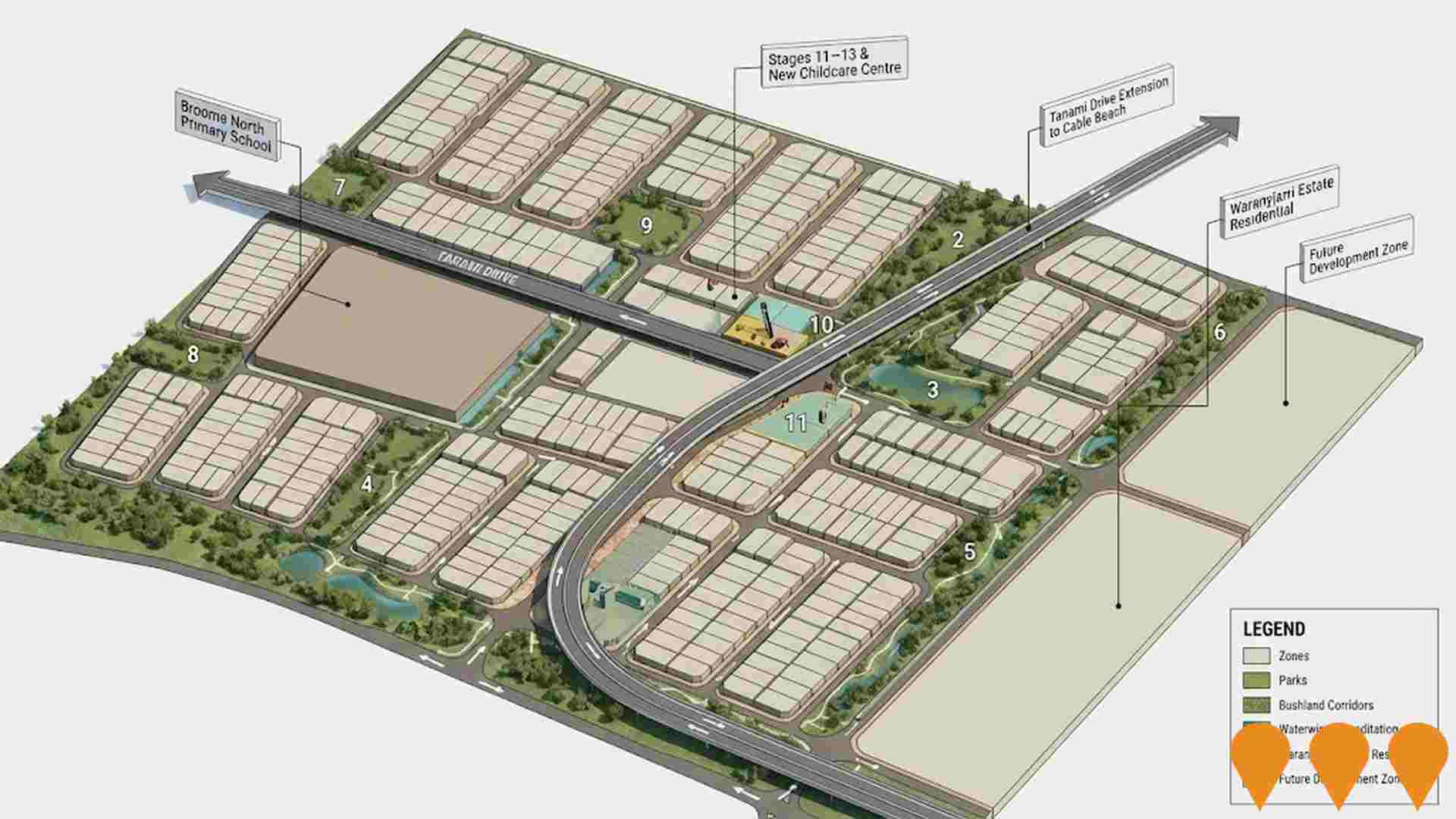
Broome Health Campus Redevelopment
Eight-year phased construction completed March 2016. $8.6 million major upgrade of Emergency Department expanding to 15 acute bays, new operating theatres, consulting rooms, public dental surgery, refurbished maternity unit, and new Acute Psychiatric Unit - first of its kind in Western Australia's north.
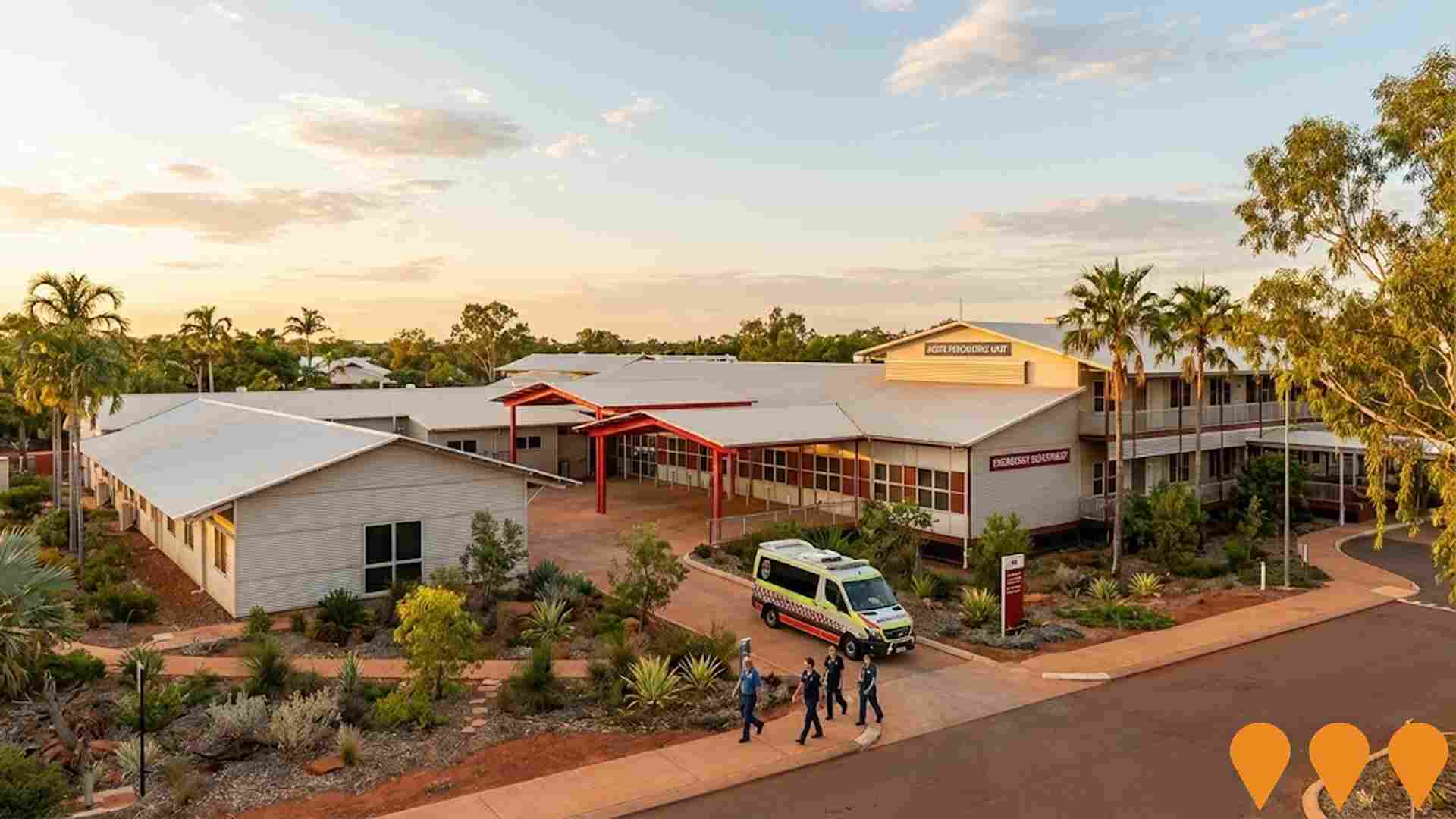
Broome Boating Facility
Proposed construction of a safe and accessible boating facility at the existing boat ramp site at Entrance Point, Broome. The project, led by the Department of Transport, is designed to address safety and access issues due to large tides, strong currents, waves, and wind. The design includes a four-lane boat ramp, two finger jetties, two groynes, an offshore breakwater, and associated public amenity infrastructure. The approvals process is currently on hold due to new heritage considerations raised during public submissions in 2021, and the proponent continues to engage with Traditional Owners to refine the concept.

Walmanyjun Cable Beach Foreshore Redevelopment
Once-in-a-generation transformation of the iconic Walmanyjun Cable Beach foreshore into a world-class waterfront precinct. Stage 1 (Southern Precinct) completed in May 2025 and officially opened in June 2025, delivering dune restoration, new beach access stairs/ramps, youth space with basketball court and skate park, upgraded car park, promenade, and improved drainage. Stage 2 (Northern and Central Precincts) underway since June 2025, including community plaza, water splash park, inclusive playground, amphitheatre, enhanced event spaces, additional beach access, coastal protection, and shaded amenities. Completion targeted for mid-late 2026.
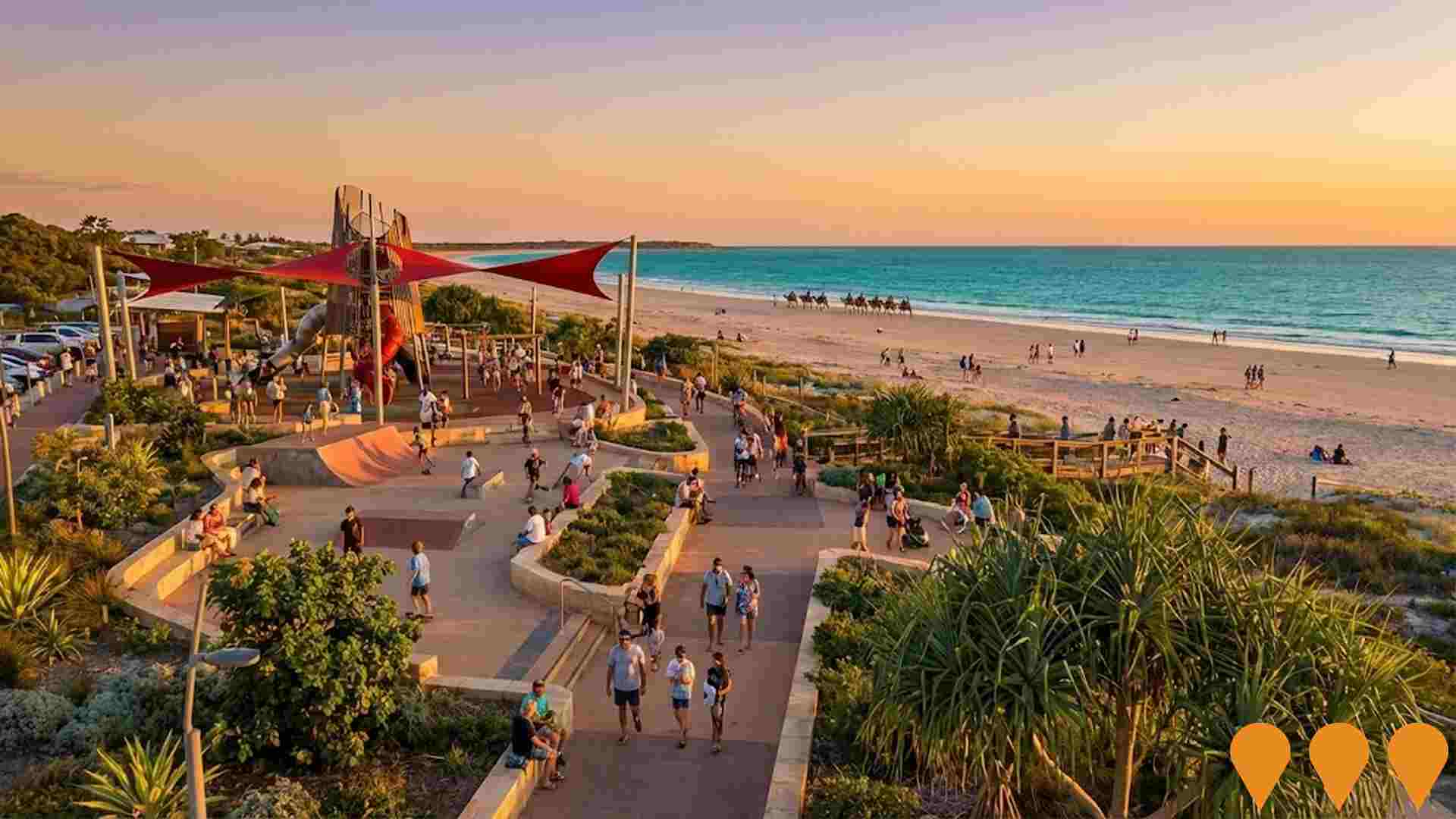
Kimberley Marine Support Base
Development of a modern marine logistics facility with a floating wharf connected to a fixed causeway, designed for 24/7 tide-independent operations at the Port of Broome. The facility is expected to service industries including agriculture, general cargo, tourism (cruise ships), and roll-on roll-off cargo, supporting over 500 permanent jobs in Broome and more than 1,500 state-wide. The facility was officially launched on September 12, 2025.
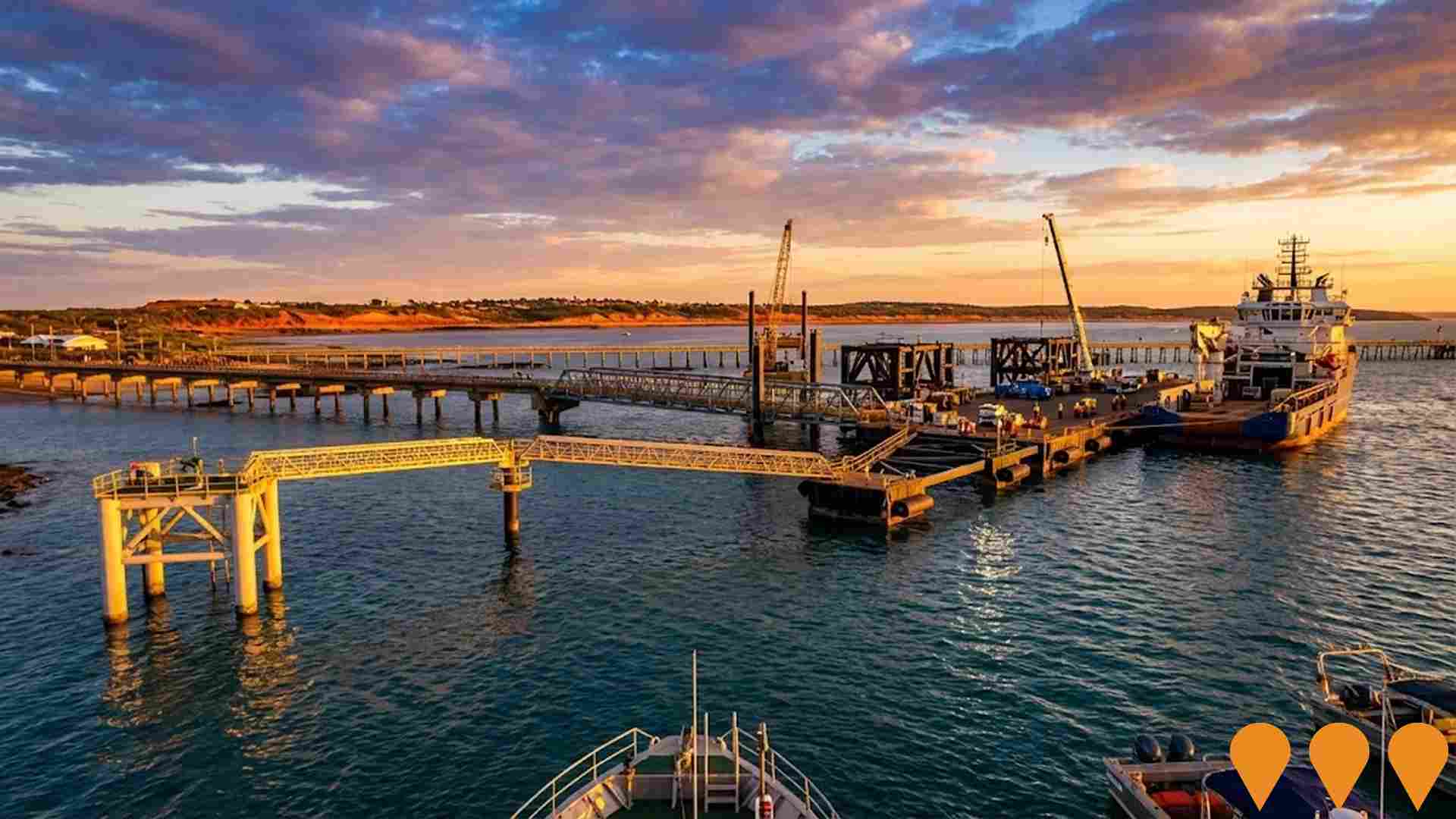
Yinajalan Ngarrungunil Health and Wellbeing Campus
Australian-first health and wellbeing campus focusing on culturally appropriate care for Broome community. $8 million State Recovery Plan funding for subdivision consultancy and civil works. Combines holistic range of facilities including short stay accommodation, renal facilities, and other health tenancies on Yawuru-owned land.
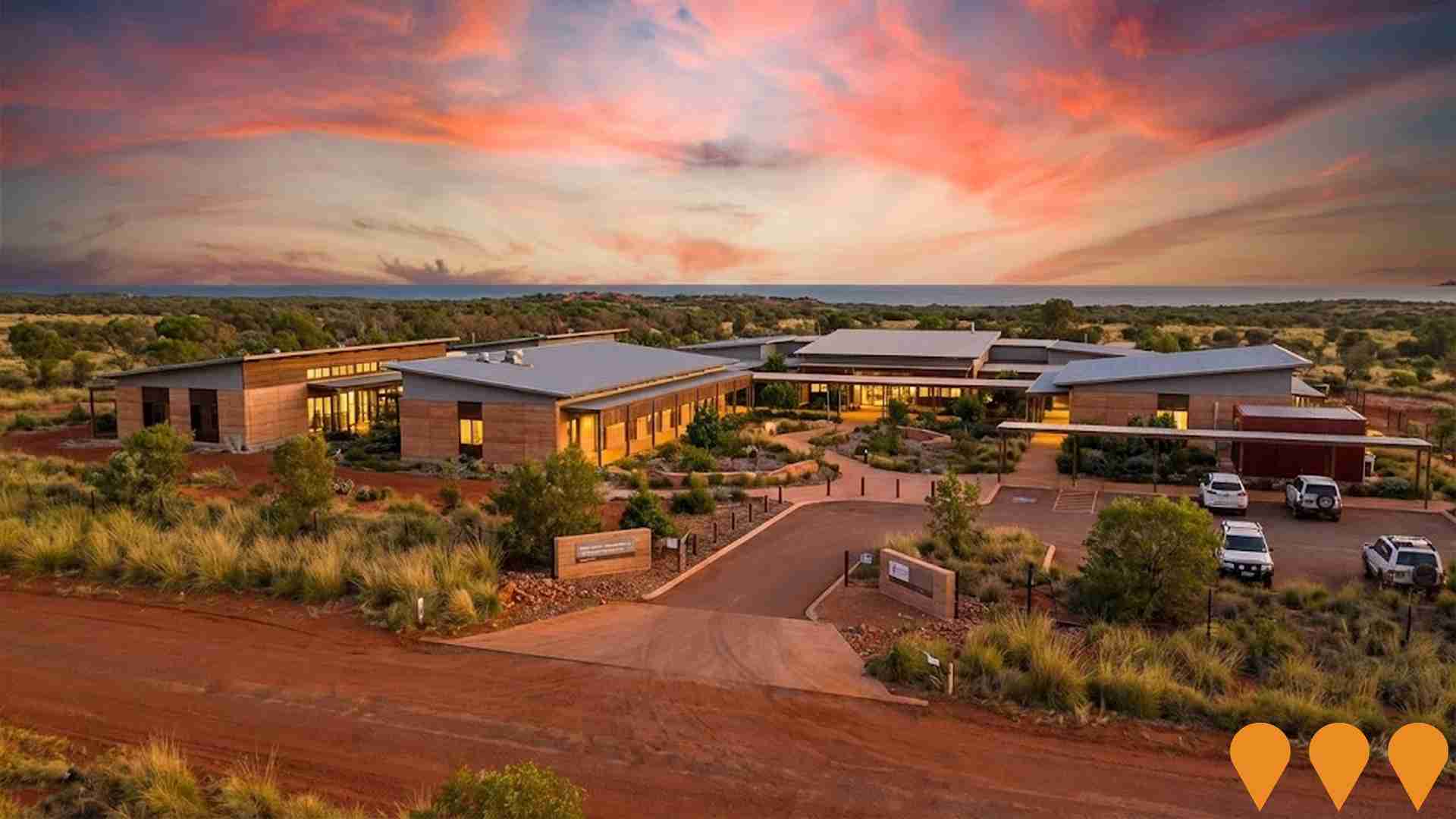
Broome Recreation & Aquatic Centre Redevelopment
Redevelopment of the Broome Recreation & Aquatic Centre (BRAC) into a modern, integrated health, sport and recreation hub. Includes new gym and functional training area, air-conditioned indoor playground (ages 1-6), upgraded creche, gender-neutral change rooms with family facilities, multi-purpose room, additional squash court with viewing area, upgraded cafe, accessible reception foyer, and new administration offices. Refurbishment of existing dry facilities to complement the aquatic area. Estimated cost $22.3 million.

Employment
Employment conditions in Roebuck face significant challenges, ranking among the bottom 10% of areas assessed nationally
Roebuck has a diverse workforce with both white and blue collar jobs, notably in essential services. Its unemployment rate was 16.2% as of June 2025.
In comparison to the Rest of WA's unemployment rate of 3.2%, Roebuck's is 13.0% higher. Workforce participation in Roebuck lags behind at 47.0%, compared to Rest of WA's 59.4%. Key employment sectors for residents include education & training, agriculture, forestry & fishing, and accommodation & food. The area specializes significantly in education & training, with an employment share twice the regional level.
However, mining is under-represented, with only 3.1% of Roebuck's workforce compared to Rest of WA's 11.7%. Analysis shows a decrease in labour force by 2.3% and employment by 6.8% from June 2024 to June 2025, leading to a 4.1 percentage point rise in unemployment rate. In contrast, Rest of WA saw employment growth of 1.1% and labour force growth of 0.5%, with a 0.6 percentage point drop in unemployment rate. National employment forecasts from Jobs and Skills Australia (May 2025) project national employment growth of 6.6% over five years and 13.7% over ten years, but local projections for Roebuck suggest lower growth rates of approximately 5.5% over five years and 12.0% over ten years, based on a simple weighting extrapolation.
Frequently Asked Questions - Employment
Income
Income levels align closely with national averages, indicating typical economic conditions for Australian communities according to AreaSearch analysis
AreaSearch's aggregation of latest postcode level ATO data released for financial year 2022 indicates Roebuck had a median taxpayer income of $63,024 and an average income of $72,612. This is higher than the national averages of $57,323 and $71,163 respectively for Rest of WA. Based on Wage Price Index growth of 14.2% since financial year 2022, estimated incomes as of September 2025 would be approximately $71,973 (median) and $82,923 (average). Census data shows household, family, and personal incomes in Roebuck fall between the 2nd and 9th percentiles nationally. Income brackets indicate that 27.1% of locals (723 people) predominantly earn within the $800 - 1,499 range, unlike regional trends where 31.1% fall within the $1,500 - 2,999 bracket. Housing costs are modest, with 89.4% of income retained, but total disposable income ranks at just the 15th percentile nationally.
Frequently Asked Questions - Income
Housing
Roebuck is characterized by a predominantly suburban housing profile, with above-average rates of outright home ownership
Roebuck's dwelling structure, as per the latest Census, consisted of 85.7% houses and 14.3% other dwellings (semi-detached, apartments, 'other' dwellings). This compares to Non-Metro WA's 79.3% houses and 20.7% other dwellings. Home ownership in Roebuck was at 16.8%, with mortgaged dwellings at 9.5% and rented ones at 73.7%. The median monthly mortgage repayment in the area was $2,167, aligning with Non-Metro WA's average. The median weekly rent figure was $100, compared to Non-Metro WA's $200. Nationally, Roebuck's mortgage repayments were higher at $2,167, while rents were lower at $375.
Frequently Asked Questions - Housing
Household Composition
Roebuck has a typical household mix, with a higher-than-average median household size
Family households constitute 73.0% of all households, including 29.8% couples with children, 19.4% couples without children, and 20.6% single parent families. Non-family households account for the remaining 27.0%, with lone person households at 24.5% and group households comprising 2.7%. The median household size is 3.0 people, larger than the Rest of WA average of 2.8.
Frequently Asked Questions - Households
Local Schools & Education
Roebuck faces educational challenges, with performance metrics placing it in the bottom quartile of areas assessed nationally
The area's university qualification rate is 15.9%, significantly lower than the Australian average of 30.4%. This presents both a challenge and an opportunity for targeted educational initiatives. Bachelor degrees are most common at 11.5%, followed by postgraduate qualifications (2.6%) and graduate diplomas (1.8%). Vocational credentials are prominent, with 31.7% of residents aged 15+ holding them - advanced diplomas (7.6%) and certificates (24.1%).
Educational participation is high at 32.0%, including 17.7% in primary education, 8.9% in secondary education, and 1.2% pursuing tertiary education. Roebuck's 4 schools have a combined enrollment of 389 students as of the latest data. All 4 schools offer integrated K-12 education for academic continuity. Educational conditions vary across Roebuck.
Frequently Asked Questions - Education
Schools Detail
Nearby Services & Amenities
Transport
No public transport data available for this catchment area.
Frequently Asked Questions - Transport
Transport Stops Detail
Health
Roebuck's residents boast exceedingly positive health performance metrics with very low prevalence of common health conditions across all age groups
Roebuck demonstrates excellent health outcomes, with very low prevalence of common health conditions across all age groups. Approximately 56% (~1,495 people) have private health cover, compared to 53.4% across the rest of WA.
The most prevalent medical conditions are asthma (4.1%) and diabetes (3.9%), while 82.5% report being completely clear of medical ailments, compared to 79.9% in the rest of WA. Roebuck has 7.6% (202 people) of residents aged 65 and over, with seniors' health outcomes aligning well with those of the general population.
Frequently Asked Questions - Health
Cultural Diversity
Roebuck ranks below the Australian average when compared to other local markets across a number of language and cultural background related metrics
Roebuck's cultural diversity was found to be below average, with 85.4% of its population being citizens born in Australia speaking English only at home, totalling 90.7% and 76.5%, respectively. Christianity is the predominant religion in Roebuck, comprising 64.4% of people, compared to 48.7% across Rest of WA. The top three ancestry groups are Australian Aboriginal (54.6%), English (13.5%), and Australian (12.6%), which differ significantly from regional averages of 33.7%, 19.1%, and 19.7%, respectively.
Notably, Spanish (0.7% vs 0.3%), New Zealand (0.6% vs 0.6%), and French (0.4% vs 0.5%) ethnic groups also show variations in representation compared to regional averages.
Frequently Asked Questions - Diversity
Age
Roebuck hosts a very young demographic, ranking in the bottom 10% of areas nationwide
Roebuck's median age is 30, which is lower than Rest of WA's figure of 40 and Australia's national average of 38 years. Compared to Rest of WA, Roebuck has a higher proportion of residents aged 25-34 (18.3%) but fewer residents aged 75-84 (0.5%). Between the 2021 Census and the present, the population aged 35-44 increased from 12.9% to 15.2%, while the 25-34 age group rose from 16.7% to 18.3%. Conversely, the 75-84 age group declined from 2.3% to 0.5%, and the 45-54 age group decreased from 12.1% to 10.8%. Population forecasts for Roebuck in 2041 suggest significant demographic shifts. The 25-34 age cohort is projected to grow by 33%, adding 163 residents, reaching a total of 653. Meanwhile, both the 65-74 and 85+ age groups are expected to decrease in number.
